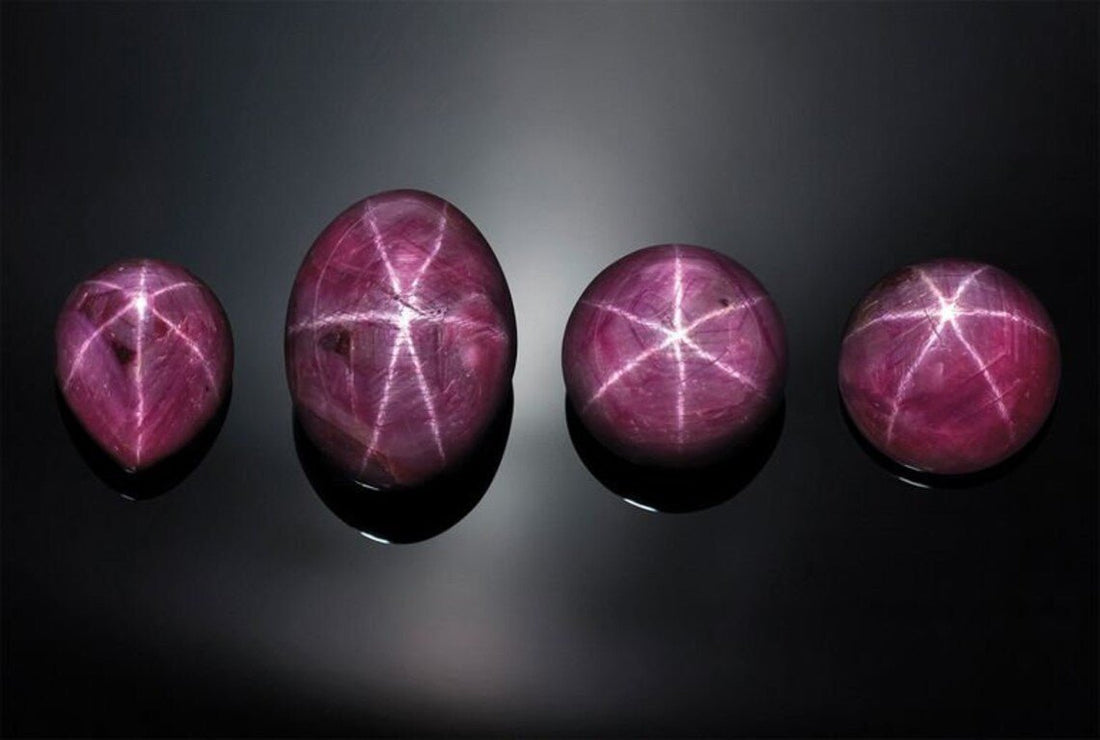
What are genuine & synthetic star rubies, and how can you tell the difference?
Hey gemstone enthusiasts! Have you ever marveled at the beauty of star rubies and wondered how to tell the real deal from its synthetic counterpart? Well, get ready to uncover the secrets as we dive into the captivating world of genuine star rubies versus their man-made doppelgängers.
Picture this: you stumble upon a mesmerizing star ruby with its radiant red hue and a captivating star-shaped pattern that seems to dance under the light. How can you determine if it's a genuine gem or a cleverly crafted synthetic? Let's find out!

What is a natural star ruby?
An natural star ruby is a type of ruby gemstone that forms naturally in the Earth's crust. It belongs to the corundum mineral family, which includes sapphires, made of aluminum oxide with traces of chromium that give it its distinctive red color. The term "star" refers to the asterism (6-ray star) phenomenon displayed by certain rubies.

What are Synthetic Star Rubies?
Synthetic star rubies are man-made gemstones that look like natural star rubies. Star rubies have a special star-shaped pattern that appears when light reflects off the gem. In labs, scientists create synthetic star rubies by using different methods, such as melting chemicals or growing crystals. These lab-created stones can closely resemble natural ones, but they are not as valuable.
So what are the big differences?
Here are some simple ways to tell the difference between a natural star ruby and a synthetic one:
Price: Genuine star rubies, being rare and naturally occurring, often command a higher price tag. So, if you stumble upon a so-called "bargain" that seems too good to be true, chances are it's a synthetic star ruby masquerading as the real thing. Though often jewellery store sellers don't know the difference, so that's not a failsafe :(
Inclusions: One telltale sign lies in their imperfections. Natural star rubies proudly sport tiny inclusions and flaws, a testament to their organic formation. Synthetic star rubies, however, often lack these quirks, boasting a near-perfect appearance that might make you do a double-take.
Origin: Knowing the gem's origin can provide some clues. If the ruby is claimed to be from a specific mine known for producing star rubies, it's more likely to be natural. Synthetic rubies are typically created in laboratories.
Color consistency: Natural star rubies may exhibit slight variations in color, while synthetic ones tend to have more uniform pigeon-blood(pinkish red) coloration.
Asterism (star) quality: When it comes to the star pattern, genuine star rubies take the prize. Their stars are usually sharp, well-defined, and seem to shimmer with a life of their own. On the flip side, synthetic star rubies may display a star that's less pronounced, with blurred edges that don't quite possess that enchanting sparkle of their natural counterparts.
It's important to note that these methods are not foolproof, and it may be challenging to differentiate between natural and synthetic star rubies without the assistance of a gemologist or specialized equipment. Gemologists possess the knowledge, tools, and expertise to distinguish the genuine from the man-made. If you're in doubt, seek the assistance of these gem-savvy experts to unveil the gemstone's true identity.
So next time you encounter a star ruby that seems to whisper tales of the cosmos, armed with this knowledge, you'll be able to appreciate the genuine wonders that nature has made us.
